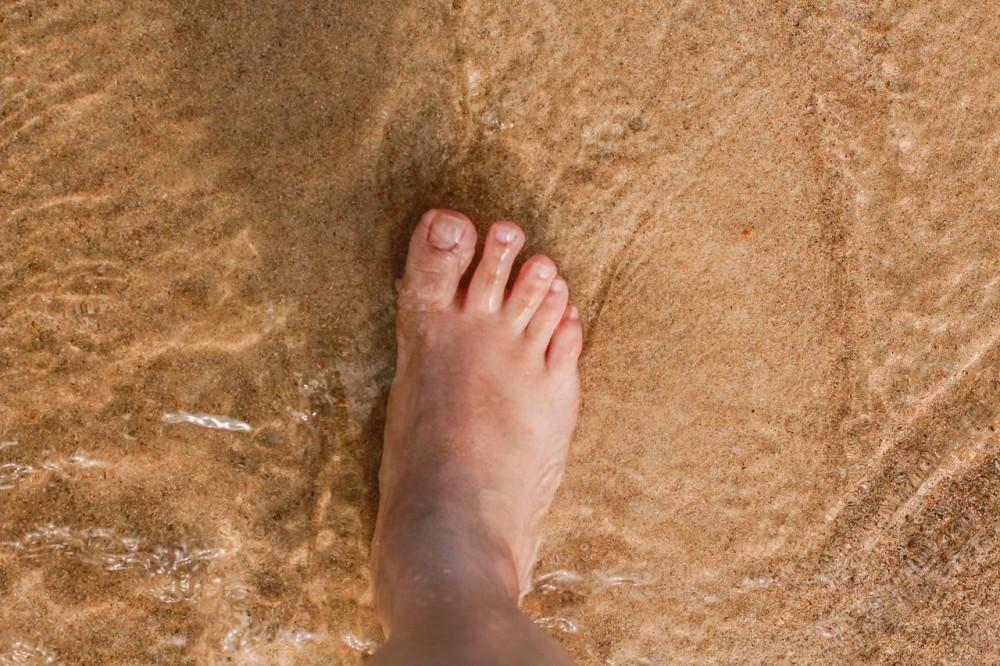Athlete’s foot is a fungal infection that affects the upper layer of the foot’s skin. It usually affects people whose feet have been sweating for a long period in tightfitting shoes, a phenomenon commonly observed in athletes hence the name.
Since an athlete’s foot is contagious, it can spread to other areas of the body such as the hands.
While athlete’s foot isn’t very serious, it can be hard to cure if the person doesn’t have a strong immune system to combat the infection. If you believe you have athlete’s foot, you should get in touch with your doctor right away.
Main Causes of Athlete’s Foot
Athlete’s foot occurs when the ringworm fungus grows on the feet. It is easy to catch the infection by directly contacting the infected person or by touching contaminated objects. The ringworm fungus lives in highly moist environments such as the ones found in locker room floors, showers, and around swimming pools.
At-Risk Populations
Just about anyone can get athlete’s foot and it primarily has to do with certain behaviors that increase one’s risk. Here are the most common factors that increase one’s risk of contracting athlete’s foot:
- Walking into public bathrooms and locker rooms barefoot
- Wearing the same socks, towels, and shoes as an infected person
- Wearing extremely tight shoes
- Exposing the feet to moisture for an extended time
The easiest way to avoid foot fungus is to wear properly fitting shoes, flip-flops, or sandals when walking into public places. Make sure to keep your footwear (shoes and socks) dry and clean because bacteria thrive in such environments.
How Doctors Diagnose Athlete’s Foot
Experienced doctors can easily tell if the person has athlete’s foot. In certain cases, they may conduct a skin test if they aren’t too sure if the cause of your symptoms is a fungal infection. One common test is a skin lesion KOH exam.
The doctor will remove a small area of the infected skin and place it KOH (potassium hydroxide). KOH will kill normal cells while leaving off fungal cells, something that can be easily seen under a microscope.
Treating Athlete’s Foot
Athlete’s foot can be treated with OTC medications for the most part. But if this doesn’t work, your doctor may use antifungal medications. A few home remedies may also prove to be useful in clearing up the infection.
Here is a list of the most common OTC medications:
- Terbinafine
- Tolnaftate
- Miconazole
- Butenafine
Serious Cases of Athlete’s Foot
The condition is relatively harmless and a source of mild inconvenience at most. But certain people may develop an allergic reaction to the infection, which can lead to blistering on the hands and feet. It is also possible for the infection to rebound after treatment.
The patient may develop severe complications if another bacterial infection develops alongside an athlete’s foot. In this case, the foot will become swollen, hot, and painful. Other accompanying signs include fever, drainage, and pus. The infection may also spread to the lymph system.
How to Prevent Athlete’s Foot
Since an athlete’s foot can spread by contracting the ringworm fungus, you can prevent it with the following best practices:
- washing the feet with soap and water every day, giving special attention to the toes
- putting antifungal powder on the feet
- washing bedding, socks, and towels in hot water
- Do not share socks, towels, and shoes with other people
- Wear flip-flops when walking into public places
- Wear breathable shoes to wick moisture away from the skin
If you require further advice on getting help, you can book an appointment with a physician at irvingprimarycare.com.
Visit https://www.healthonemedicine.com or call (469)262-5762 for more information.

